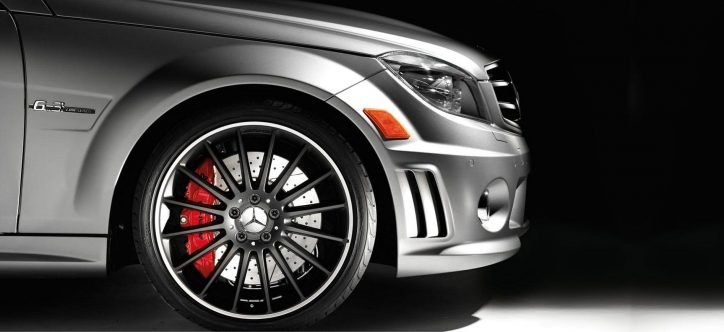When To Replace Your Mercedes Tyres?
Giancarlo Perlas October 29, 2017
As the component that your car drives on, tyres are more important than we care to think. Getting a good set of Mercedes tyres for the road is still only a good start. A few hundred miles later, even the best of tyres start to gradually wear off, affecting the performance and safety of the car.
Often tyres are both the most overlooked and single most important component of any ride. As the final gear between your car and the road, all the force of your acceleration, braking power, and torque from turning must be transmitted through your tyres before moving your car even an inch. Even if you have the most powerful car in the world, it means nothing unless you have the proper tyres.
How to maximise the lifespan and performance of your tyres?
1. Check your Tread Depth
Tread depth is a factor to consider when replacing tyres. All tyres have tread wear indicators which are small blocks of rubber moulded into the tread grooves at regular intervals. As the tyre wears, these blocks get closer and flush with the surface of the tread.
What is the tyre tread depth legal limit in Australia? The minimum legal tread depth is 1.5 mm across the width of the tread. If you are not sure, if you are having an illegal?tread, follow these simple steps and you’ll be save.
The easiest way of ascertaining the tread depth is by using a tread depth indicator, available at tyre retailers or at one of our fitting stations.
2. Check for Uneven Wear
Uneven wear is a sign that showcases more than normal stress on the tyre. This could be due to either wrong wheel alignment, wearing suspension, or that you have been driving with the tyres under or over-inflated.
To check for uneven wear, inspect the whole contact surface, including the outer edges of the tyre. Our interactive animation will show you the tyre wear in detail.
3. Check the Tyre Age
Experts claim that a tyre older than five years would need replacement as the rubber loses its suppleness through the drying out of moisture and oils. A tyre’s age can be identified by checking the manufacture date stamped on the sidewall, usually in the form of a four-digit number, where the first two digits represent the week of manufacture and the last two digits the year.
A good set of wheels have a big role in giving you a stable ride, sure fire handling and improved fuel economy. The state of the rubber your vehicle rides on can also mean confident braking and a reassured drive. Check your tyres regularly, and if there are signs of wear and tear you know it’s time to change them.
4. Check Your Air Pressure
Checking your air pressure regularly goes a long way toward extending your tyre’s lifespan (Here is a handy guide on how to check air pressure correctly). Having over or under-inflated tyres leads to uneven pressure on your treads, which will start to show as an uneven wear pattern
Driving with over inflated tyres wears down the center of the tread, while driving with under-inflated tyres causes wear near the shoulders of the tread.
According to Low Price Auto Glass driving with under-inflated tyres will not only cause excessive uneven wear, but also decreases your fuel economy. It’s estimated that for each 3 psi (pounds per square inch) your tyres are under-inflated, you lose 1% fuel economy and add 10% more tyre wear. It’s best to check your air pressure at least once per month (if not every time you stop to fill up your tank). Also keep in mind that changes in temperature effect your air pressure – colder temperatures will cause your air pressure to drop, while hot temperatures will cause it to increase.
A general rule of thumb is to keep your tyres somewhere between 30 – 25 psi (pounds per square inch).
Conclusion
Getting a new set of tyres immediately improves the performance, mileage, and feel of your car.
Checking when to replace your tyres is very straightforward (1.6mm tread depth).
Driven properly, anyone can extend their tyre’s lifespan well beyond the average mileage. Regularly checking your alignment, air pressure, and rotating your tyres will also boost their lifespan (as well as your car’s performance) significantly.




